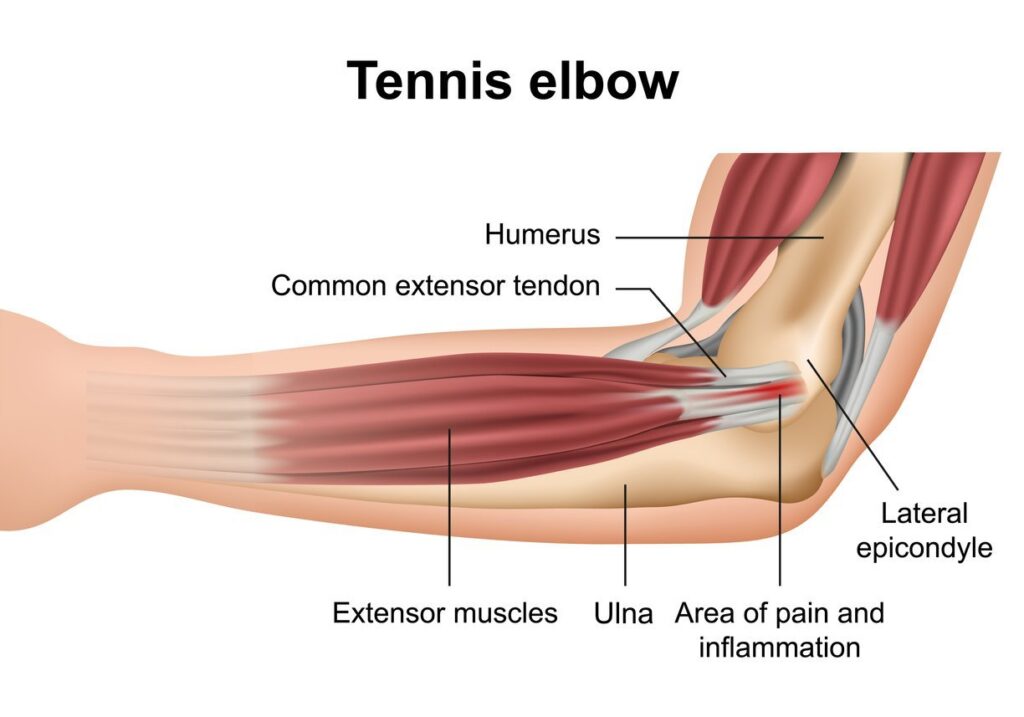Tennis elbow is a condition that is commonly developed through the repetitive overuse of one’s forearm muscles. Despite its name, tennis elbow does not only occur for athletes participating in racquet sports. It can also be seen in those who often work with their hands, for example, painters or gardeners.
The pains associated with tennis elbow could get serious and make it hard for you to go about your usual activities. When this happens, you are going to need physical therapy for treatment.
What role can physical therapy play in the treatment of tennis elbow?
After a confirmed diagnosis, there may be several surgical and non-surgical treatment options that your physician recommends. In the treatment of tennis elbow, physical therapy may be recommended as a non-surgical option. This is because it has often played an effective role in helping to hasten the healing process and improve muscle function.

Physical therapy involves the use of specific exercises to strengthen your forearm muscles and improve your resistance to repetitive movements. Exercises include the wrist extensor flex, stress ball squeeze, and finger stretch. Whilst there are more that can prove to be effective, we will discuss the strengthening exercises in detail to help you gain a more thorough understanding of how they can be performed.
Physical therapy aims to reduce pain and make your forearm muscles stronger. The physical therapist will teach you how to perform common exercises in a way that prevents subsequent injuries. Physical therapy helps in improving the blood flow to muscles and tendons. These injured tendons don’t receive the same amount of blood and oxygen that your muscles should receive to do perfectly. Exercises are useful in speeding up the healing process by improving the blood flow and oxygen supply.
So, if you are feeling sad about the restrictions and pain that the tennis elbow has caused you, physical therapy will increase the level of your neurotransmitter serotonin, which will brighten up your mood and generally help to improve your mental health.
Physical therapy, when done with proper guidance, could also be effective in the prevention of tennis elbow in the future.
It is a painful condition that is caused after overusing the extensor muscles of the arm and forearm, especially in the area where the tendons attach to rounded projections of bone on the outside of the lateral aspect of the elbow. Such muscles are used to grip, to twist, and to carry objects, but if you use your wrist and your hand for a longer period, such as when using a computer or when using operating machinery, but of course also when playing tennis with a technique or grip that is improper, it can lead to the condition other referred to as tennis elbow.
What are the signs and symptoms of tennis elbow?
This condition can occur all the sudden after using the wrist and your hand excessively for activities that will require force, which can include twisting, lifting, or pulling. In more common cases, symptoms of tennis elbow will develop gradually over weeks and months, because of repeated and forceful use of the wrist, the hand, and the elbow. If you work as a cashier, you might also develop symptoms of tennis elbow due to repetitive and often very forceful typing, which is then combined with the continuous lifting of grocery bags.
Symptoms might include pain that radiates into the forearm and the wrist, difficulties doing very common tasks, such as holding a coffee cup or turning a doorknob, issues with gripping activities, increased pain whenever you use your wrist or hand for lifting objects, opening a jar, or gripping something tightly, such as a fork or a knife. It can also lead to stiffness in the elbow or weakness in the wrist, hand, and forearm.
How is tennis elbow diagnosed?
Tennis elbow is a condition that typically occurs due to repeated movements. As a result of this, muscles, and joints in this area of the body will be affected as well. Your physical therapist might perform an examination of the body not only for your elbow but also for other areas of the body that might be affected and might also be contributing to the pain. A therapist will perform some special manual tests, which can help to diagnose the issue and can also help to detect conditions, such as muscle weakness, which might have led to the issue in the first place. For example, your therapist might ask you to gently tense or to gently stretch the sore muscles, as a help in identifying the exact location of the issue. In rare cases, an X-ray will be needed to diagnose this condition.
Can you prevent tennis elbow?
It is, luckily, a condition that can be prevented. You can prevent it by using proper technique in your job and your sport, by staying fit, by using equipment that is appropriate for your body type and your level of activity, and more. A physical therapist can show you tips and tricks to follow and how to best prevent this condition.
If you’ve suffered from tennis elbow many years ago, you might be at risk of suffering from it again, especially if you didn’t allow the injury enough time to heal or your muscles enough time to strengthen and joint mobility to fully restore. If you return to sports and activities before fully being recovered, you might suffer from persistent pain, or it might be very easy for you to frequently suffer from re-injuries.
You should speak to a physical therapist about whether your elbow, forearm, and wrist have healed enough and are ready to get back on the horse. In many cases, just because you no longer feel the pain, it doesn´t mean that the injury has healed, and it might take some more days or even weeks before it fully does so. As is the case in many aspects, it is better to be safe than sorry!





